Survey emails best practices for strategic research
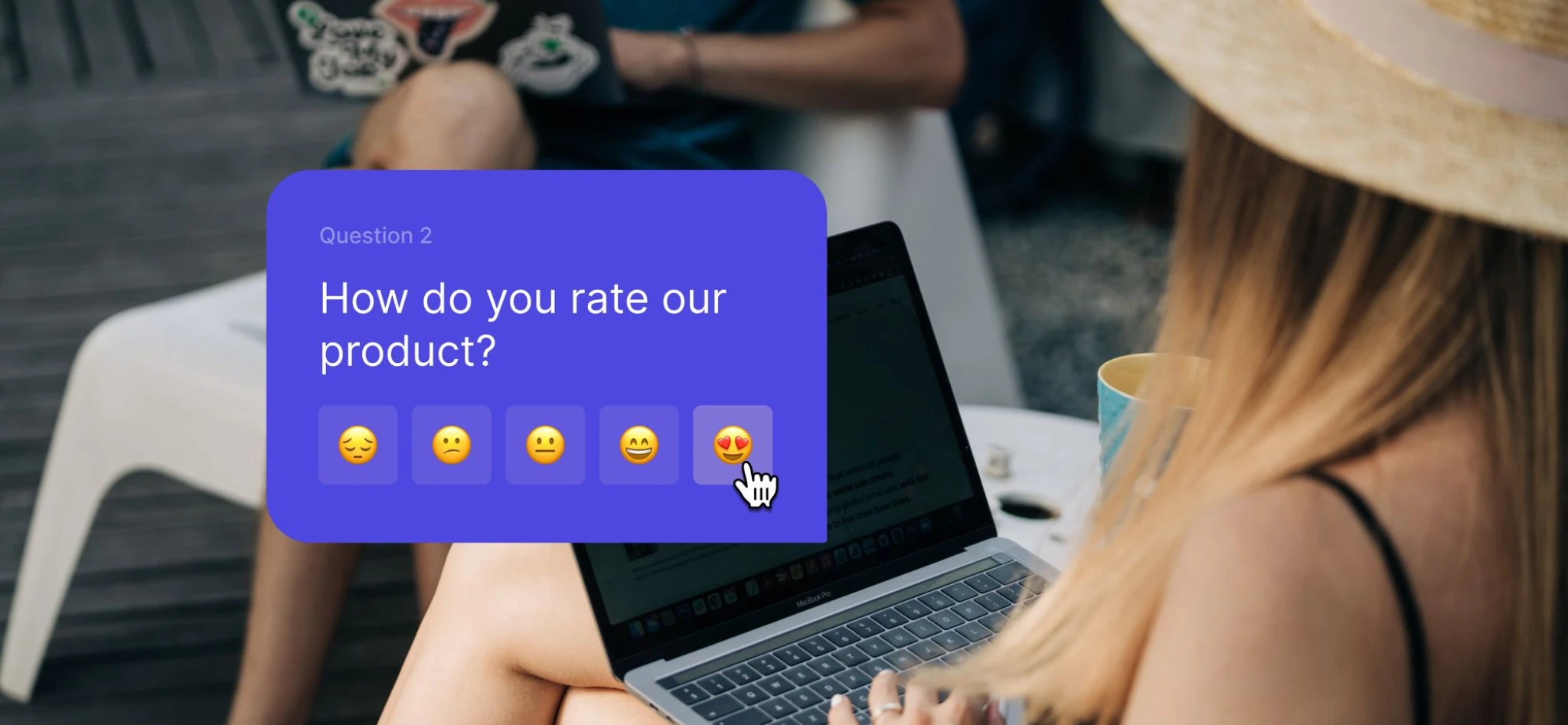
- What is a survey email?
- Benefits of survey emails
- 1. They’re cost-effective
- 2. They help you improve
- 3. They increase brand trust
- 4. They can be personalized
- 5. They get better open rates
- 11 best practices
- Types of survey emails (with examples)
- 1. NPS survey
- 2. CSAT survey
- 3. CES survey
- 4. Cart abandonment survey
- 5. Post-purchase survey
- 6. Market research survey
- 7. eNPS survey
- How to start sending survey emails with MailerSend
- Add survey emails to your transactional email flow
Using a reliable email delivery service is the first step to conducting successful market research via email—if emails aren’t getting delivered, your customers won’t be able to respond. But to ensure maximum response rates, it’s important to know about the different survey types and best practices for creating effective survey emails.
So let’s dive right into the type of data you can collect via survey, the best emails for the job with survey email examples, and how to make your survey invitation emails more engaging.
What is a survey email?
Survey emails are a method of collecting customer feedback and data by delivering an interactive survey or questionnaire to the recipient’s inbox. Survey emails usually contain a survey link to a third-party platform or an embedded survey that people can answer from within the email. This type of survey email will usually allow the recipient to answer the first question within the email and then continue the survey in a pop-out.
Benefits of survey emails: Why they’re great for business
1. They’re cost-effective
While traditional methods of conducting customer research are time and resource-intensive (think telemarketers), survey emails are relatively inexpensive and easy to implement. Surveys can be sent out in bulk or automated to be delivered to individual recipients according to a specific action.
With MailerSend, survey emails are free to create and can be sent as part of your monthly quota. There’s no need to set up a separate initiative to collect survey data.
2. They help you improve your offering
To develop and grow your business, you need to continuously improve your product and/or service. There are numerous ways to approach this, but the most valuable is through customer feedback. With survey emails, you can gather unique customer insights about their pain points, barriers to purchase/upgrade, customer experience, user experience, product faults, demographics, and more. This information is like gold and will help to drive your product development.
3. They increase brand trust
When you ask customers to participate in a survey, you’re showing them that your business cares about their opinions and experience. It shows that you’re proactive about improving your product and service, and makes customers feel seen and heard. This all leads to increased brand trust and loyalty, and better customer relationships.
4. They can be personalized
Survey email templates can be easily personalized with customer data using personalization variables. This allows you to effortlessly conduct surveys based on the customer’s individual experience, as well as provide a more personalized and engaging experience.
5. They get better open rates
Transactional emails have average open rates of around 40-50%, and some types can even go as high as 80-85%. Higher engagement rates mean transactional emails provide many opportunities to drive your marketing and sales efforts (within reason!)—and they’re the perfect vehicle for collecting customer feedback.
11 Email survey best practices for maximum responses
Getting your survey in front of your customers is the easy part (we’ll share further in this article how you can easily add survey emails to your transactional email flow). However, it’s important to spend some time creating a strategy and optimizing your surveys and messaging to ensure your efforts result in the most valuable outcome. So let’s take a look at some best practices for approaching your survey emails.
1. Develop a strategy and define your objectives
Crafting a roadmap and defining goals for your surveys will provide real value that will enable you to drive business development. Skip this and they become just another marketing exercise. The first step is to determine the purpose of the survey. To do this, ask:
Why do we want to carry out this survey?
What do we want to learn from this survey?
What problems are we trying to solve with this survey?
Who is the target audience for the survey and how will this impact its contents?
How does the purpose of this survey align with our marketing/branding/sales/development goals?
What will we do with the data that we collect from this survey?
2. Target the appropriate audience
Different types of surveys will require different audiences. While there may be cases in which you can send a survey to your entire customer base or email list, in many cases you’ll want to segment customers based on various factors. Possible segments could include customers who have made a purchase in the past 3 months, customers who have contacted support, users of your app or service who are active, and on the flipside, users who have failed to convert.
Creating these segments will allow you to tailor your survey emails to be more relevant to the specific audience, which will result in higher engagement rates. It will also ensure that you’re able to collect the most accurate and valuable data for your objectives. Consider what it is you want to learn and which audience will be the most effective for collecting this information. Aim for quality over quantity.
3. Keep the survey as short as possible
Shorter surveys are more likely to attract participation than long-winded questionnaires with tons of questions. Don’t get us wrong—longer surveys are sometimes necessary. Use your best judgment and where possible, keep things to fewer than 10 survey questions. Try to also let recipients know how long it will take to complete the survey and include a progress tracker so they know what they’re getting into.
4. Offer an incentive
The information that your customers can provide is invaluable. Offering some kind of incentive, such as a discount code, freebie, free shipping, or Amazon voucher, is a great way to encourage more responses from people who may otherwise skip your survey. Offering an incentive is particularly appreciated if your survey is on the longer side.
5. Send at the right time
What is the right time to send a survey email? There really is no answer. It depends on your audience and your reason for sending the survey in the first place.
Look at your audience’s behavior to strategically time your survey emails for optimum engagement. If you’re conducting a survey for a specific event, purchase, or use of your service, consider the best amount of time to wait before sending the survey.
For example, if you’re looking to gain insights into a specific feature in your app, you can send your email when the user has used the feature and had time to evaluate it. Sending a survey email the moment someone signs up for your product won’t help you get a good response rate or valuable insights.
6. Use a compelling subject line and preheader
Once a survey email is delivered, the next important step is getting the recipient to open the email. To do this, you need to craft a compelling survey email subject line and preheader that gives the customer a reason to open it. Think, why should they open the email? How will completing the survey benefit them? Why do you want to hear from them? How can you make the recipient feel valued?
Check out these examples of effective survey email subject lines and preheaders:
Sender | Subject | Preheader |
Flying Blue | Flying Blue survey: your feedback is key! | The total survey takes approximately 3 minutes to complete. |
Early Rider | Your input matters. Win big by taking our survey. | Taking our survey is quick and easy. |
TSB Bank | Want want to hear your views. | This survey will take around 10 minutes to complete. |
Air France | We value your opinion. | Completing this survey will take less than 2 minutes |
Skin Rocks | Share your thoughts and win £500 Worth of Products | - |
Revolut | Trust Revolut? Let us know in our short survey 📣 | - |
Revolut | Help us shape our future products | - |
KLM | Please evaluate your KLM flight from Amsterdam to New York City | - |
Secret NYC | We’d like to hear from you | - |
7. Stay on brand
Your survey emails should fit effortlessly into your overall communications strategy for a seamless customer experience. Use the same language and voice as you do in your other emails to effectively convey your brand personality. Keep logos, colors, fonts and imagery consistent so that recipients can trust that they are a legitimate part of your communication. It’s also a good idea to further reinforce your brand identity and build trust by using custom tracking URLs that use your own domain name.
With MailerSend, it’s easy to keep all of your transactional emails on brand with templates and 3 user-friendly email builders. You can effortlessly create a branded master template that contains your company’s email header and footer and use this as a basis for your survey emails. Then, simply place the survey block in the email using the drag and drop email builder.
8. Make survey email copy clear and concise
The goal of the email is to get the recipient to click on the survey and complete it—so you want this to happen as quickly as possible before they lose interest or get distracted.
Keep the copy in your email body short and sweet while including the important information needed to convince the recipient to take part. Get straight to the point and include:
How long the survey will take and/or how many questions there are
What the survey is about/what the goal of the survey is
How their responses will be used
Plus, let them know how important their participation is—your customers want to feel valued!
Here’s a great example from Revolut. Not only do they make the recipient feel important, but they also make them feel like they have a real say in the future of the product.
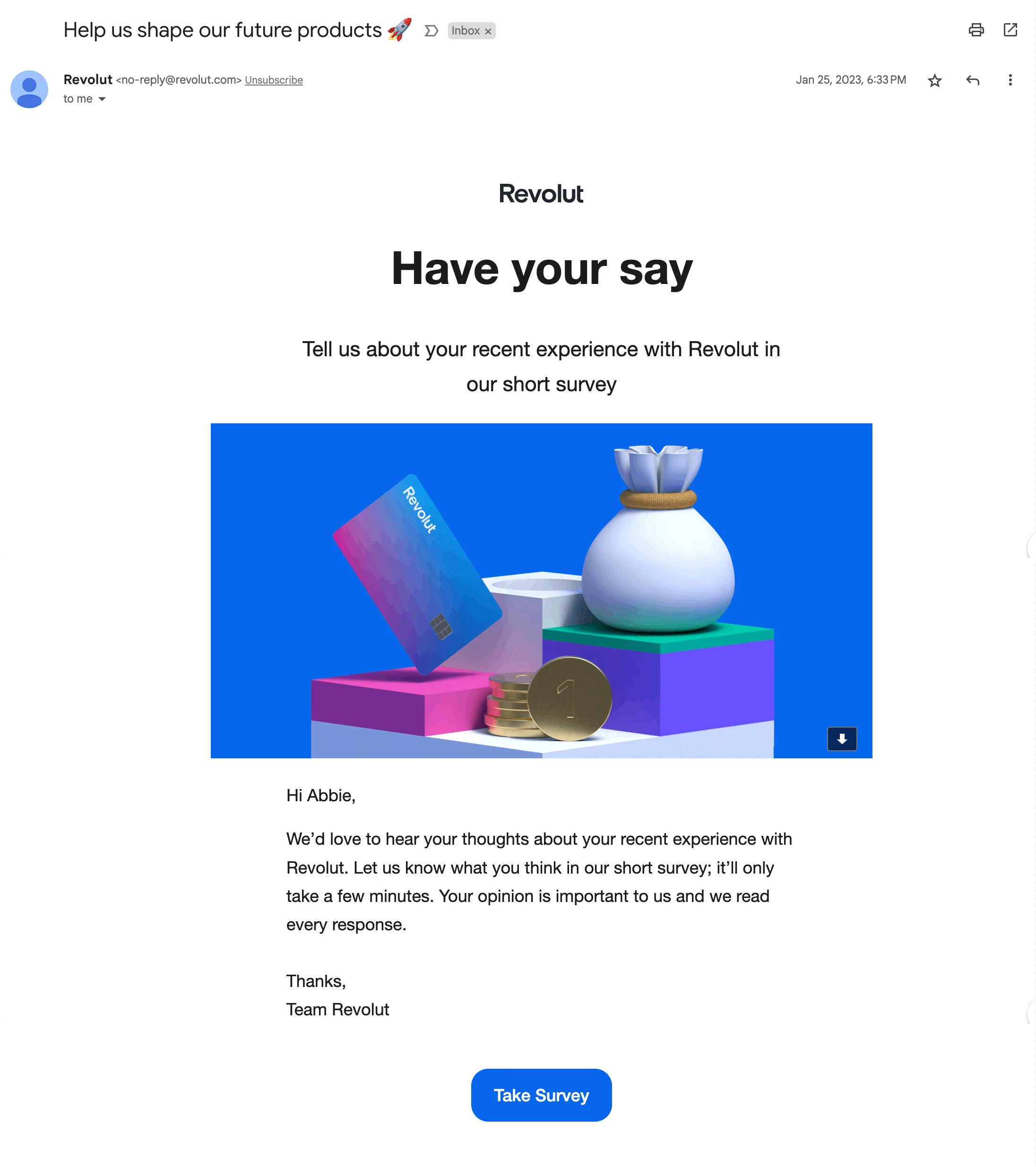
9. Send a reminder email
There are guaranteed to be some recipients who don’t have time or forget to complete the survey the first time that you send it to them. You don’t have to leave things there, though. You can boost survey response rates by sending a well-timed reminder email to the recipients who didn’t respond to the first survey email.
For best results, tweak the email slightly to acknowledge that this is a reminder email. It shows more care and consideration in your communication and gives the impression that you value your customers.
10. Use split testing to optimize your survey emails
It’s always a good idea to test out multiple options and see what works best with your customers. Use email split testing to test multiple versions of your survey email template. You can test the subject line, email content, layout, CTA (call-to-action) and imagery then use these results to optimize future emails.
11. Finally, share your results
Depending on the nature of your survey, you might want to close the feedback loop by sharing the survey results. Not only does this showcase transparency, highlight your commitment to improvement, build trust with customers, and increase engagement, but it can also position you as an expert authority in your industry.
If you’ve conducted wider market research, consider creating a report and sharing it. If your survey was more customer-focused and unique to your product, service, or customer experience, let your customers know how you’re going to use the results to improve your offering.
Here’s an example from fitness app Sweat where they share the results of a customer satisfaction survey.
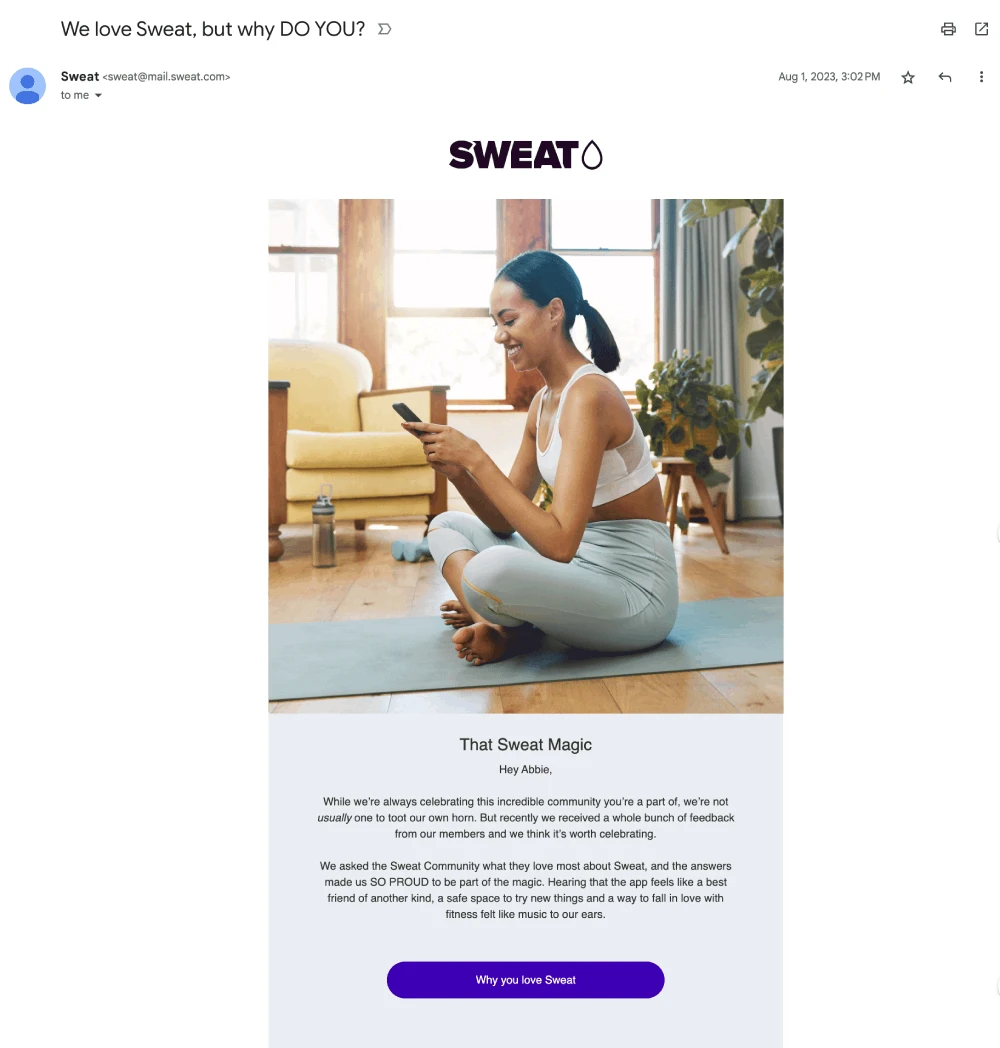
Types of survey emails (with examples)
Different types of surveys are optimized to get the highest rate of responses. Here are the most common types.
1. NPS survey
An NPS, or Net Promoter Score, is a widely used metric for measuring customer satisfaction and loyalty. An NPS survey typically consists of a single question: How likely is it that you would recommend our product/service to a friend or colleague? The respondents provide a rating on a scale from 0 to 10. Ratings are categorized into 3 groups:
Promoters (9-10): Customers who are highly satisfied and likely to recommend
Passives (7-8): Customers who are satisfied but not enthusiastic
Detractors (0-6): Customers who are dissatisfied and may spread a negative opinion about your brand through word of mouth
The NPS is calculated by subtracting the percentage of detractors from the percentage of promoters. This results in a score ranging from -100 to +100. The higher the NPS, the more positive the customer sentiment and brand advocacy.
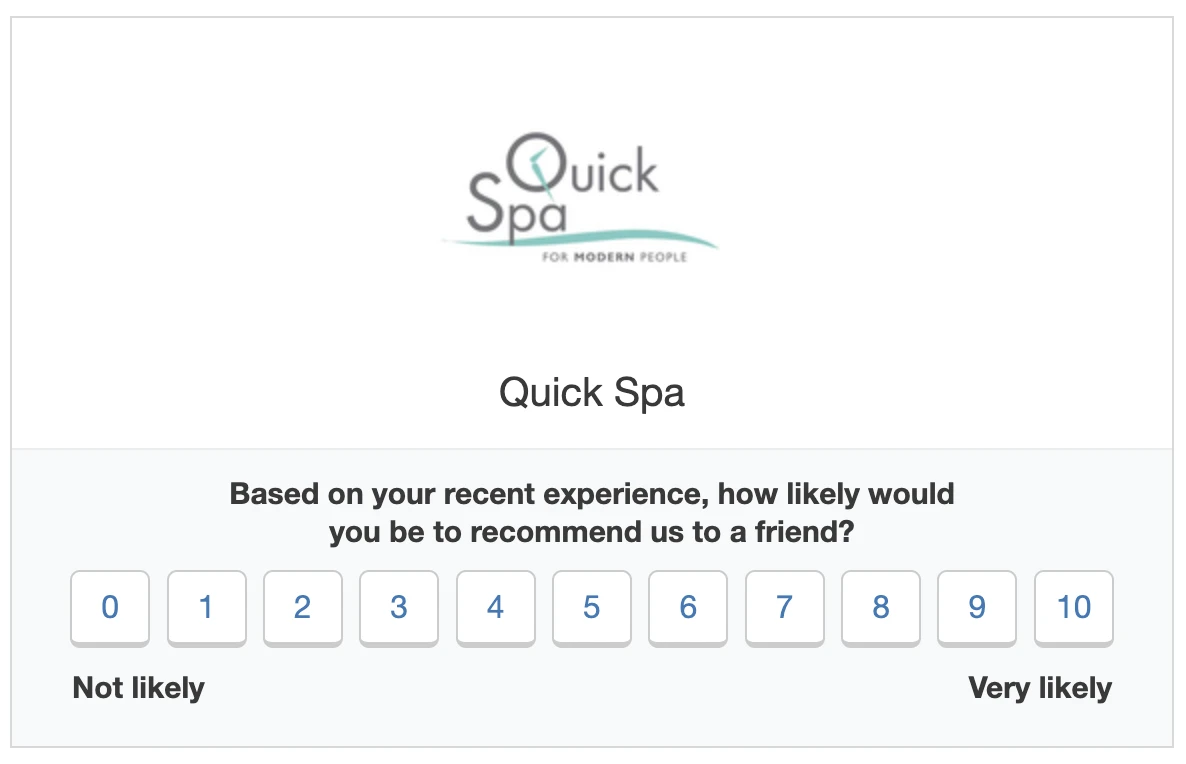
2. CSAT survey
CSAT, or Customer Satisfaction score, is a metric used to gauge how satisfied customers are with a specific interaction or experience with a company. Similar to NPS surveys, CSAT surveys often consist of 1 question, such as “How satisfied were you with your experience?”. The customer can respond with a rating, usually on a scale from 1 to 5 or 1 to 7.
CSAT surveys cover a wider range of categories:
Very satisfied
Satisfied
Neutral
Dissatisfied
Very dissatisfied
Customer satisfaction surveys are typically used to assess satisfaction in relation to specific aspects of a business, for example, customer support interactions and product purchases.

3. CES survey
CES, or Customer Effort Score, is a metric used to measure how easy or difficult it is for customers to complete a specific task. CES surveys typically include 1 or more survey questions along the lines of “How easy was it for you to [complete this task, e.g. resolve your issue with support]”. CES surveys can be used to evaluate various aspects of a business, such as navigating a website, using a specific feature in an app, making a purchase or opening a ticket with support.
The response is usually given on a scale ranging from “Very difficult” to “Very easy”. The lower the level of effort needed, the more seamless and effortless the experience is while higher scores indicate that the process or journey is not very user-friendly. This type of survey is good for identifying areas for improvement in the customer experience.
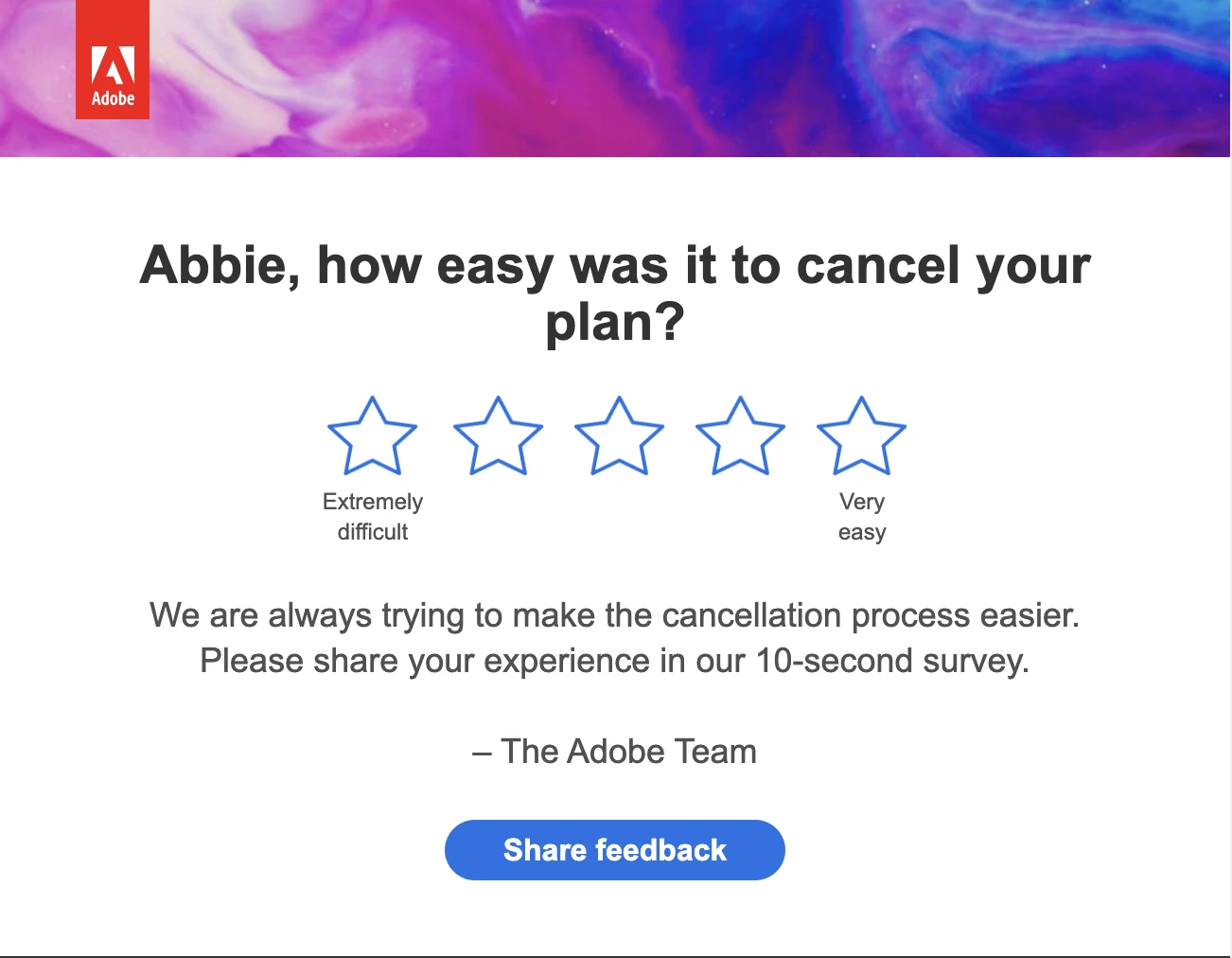
4. Cart abandonment survey
You’re probably familiar with cart abandonment emails, reminding customers about the purchases they’ve left in their cart. Cart abandonment surveys go a step further and are designed to gather feedback about why the customer left the website without completing the purchase.
They aim to understand the reasons behind cart abandonment and gather insights that can help businesses improve their online shopping and checkout experience to reduce cart abandonment rates. Cart abandonment surveys usually include questions about the reasons for not completing the purchase and potential concerns or issues during checkout.
This type of survey helps businesses identify points of friction in the purchasing journey, specifically during the checkout process. They can use this valuable feedback to address customer concerns and improve the user experience of their e-commerce store.
5. Post-purchase survey
One of the most common types of survey emails, post-purchase surveys are used by businesses to gather insights from customers shortly after they have made a purchase. The goal of this type of survey is to learn about customer satisfaction levels regarding the product or service and the buying experience, and identify areas for improvement.
As well as questions about overall satisfaction, post-purchase surveys might also include questions about the purchasing process, shipping and delivery, customer support, and any specific feedback or suggestions that the customer would like to provide. With this information, businesses can evaluate and improve the customer experience, increase loyalty, and make data-driven improvements.

6. Market research survey
A market research survey is a method of collecting, analyzing and interpreting data from individuals to gain insights into various aspects of the market. This includes consumers, competitors and the industry as a whole.
While other types of surveys may touch on aspects of market research, dedicated market research surveys often cover a wider range of topics to give a more general overview. A typical survey might include questions about purchase behavior, customer preferences, demographics, satisfaction levels, brand perceptions, market trends, and more.
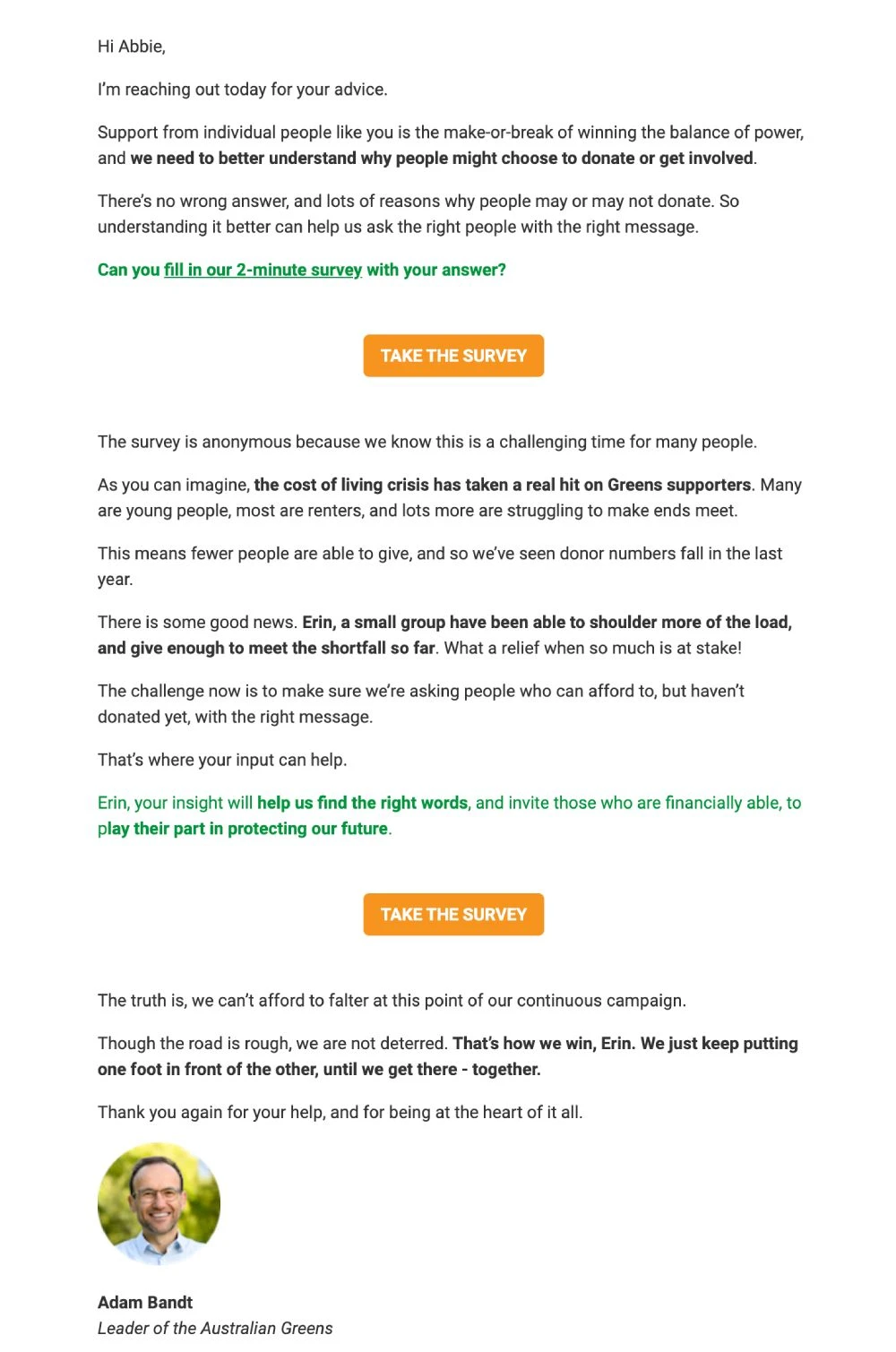
7. eNPS survey
An eNPS, Employee Net Promoter Score, is a type of survey that organizations use internally to measure employee satisfaction. Similarly to NPS, to determine the eNPS, employees are usually asked how likely they are to recommend the company to friends and family as a place to work. The scores are then also categorized in the same way: Promoters, Passives and Detractors.
How to start sending survey emails with MailerSend
MailerSend makes it really easy to embed surveys into your transactional emails—no third-party survey tool is needed. Before you get started, log in to your MailerSend account or sign up. It’s completely free for up to 3,000 emails per month. Once you’re logged in and have verified your domain:
1. Under Emails, navigate to Templates.
2. Click Create template.
3. Choose the Drag & drop editor.
4. Choose a template to start out with or create a template from scratch.
5. Design your template and the Surveys block to add a survey to your email. You can find the Survey block under the Special category.
6. Use the Questions tab to add questions to your survey.
To learn more about the different types of questions, rules and settings for surveys, check out our help guide on how to add a survey to your emails.
How to receive your survey responses
To receive responses from your survey, you’ll need to use webhooks. This is easy to set up but requires some technical knowledge, so we recommend that a developer takes care of this step. You can find all the information about tracking responses with webhooks in the survey help guide.
Add survey emails to your transactional email flow
Your customers’ insights are incredibly valuable, and an essential part of your marketing, sales and business development strategy. Survey emails are the ideal tool to connect with customers, gather insights, and enhance overall engagement. By understanding your goals, defining your strategy, and following best practices, you’ll create survey emails that fit seamlessly into your existing communication and unlock a wealth of information.
Start sending survey emails to customers now
Sign up for MailerSend for free and get 3,000 emails/month, access to the API, SMTP and webhooks, and 3 user-friendly email builders.



